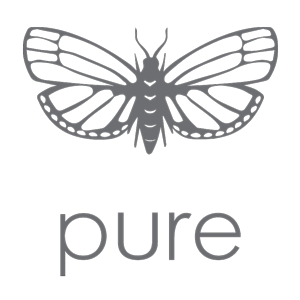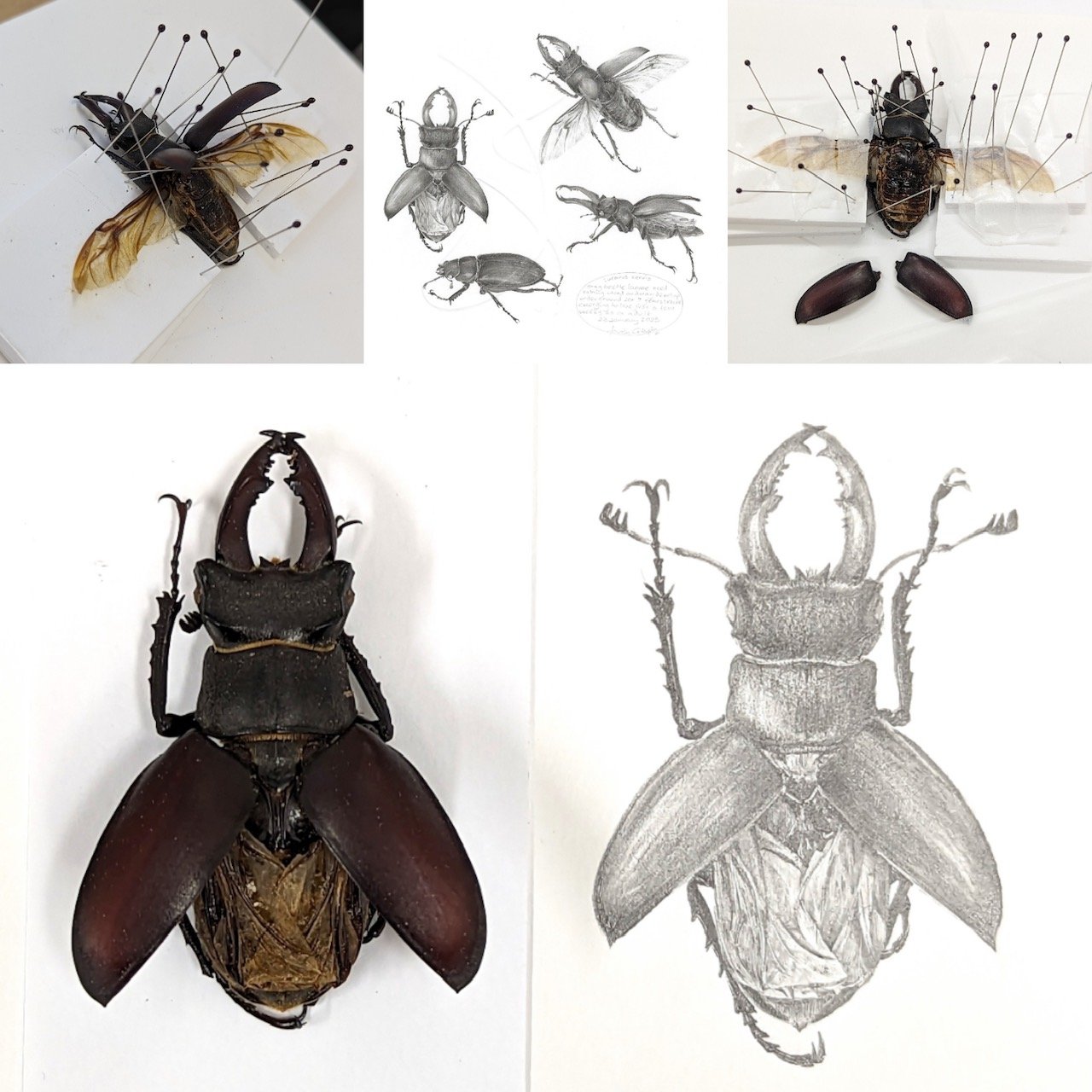Louisa Crispin
Please could you tell us a little about yourself and your background.
Born in Farnborough, Hampshire we moved to Sissinghurst, Kent when I was eight and I now live in nearby Hawkhurst. My days were filled with sport and outdoor living, I rarely sat still.
Did you have an interest in art as a child?
Apparently I drew on the wall all the way up the stairs when I was little but I have no memory of drawing during my growing years. However I was very interested in all types of craft. My mother was a contemporary textile artist, having sewn for most of her life and worked for Digby Morton and Ronald Patterson in her late teens. I attended many shows and workshops with her over the years before training as a silversmith and subsequently learning to draw.
Did you have a formal art education or are you self taught?
I would be described as “self taught” in that I never studied at a university, but I have attended many courses by some talented tutors and artists that have generously shared their knowledge and enabled me to develop my own style. I aim to find a balance between a skill based practice and the excitement of exploring new techniques and ideas.
Was there a moment or a person or a place in your past that influenced you or you feel set you on the journey to where you are now?
Carolyn Worby - a botanical artist who exhibited at Florum in Kent for several years. I fell in love with her intricate skeleton leaf drawings and wondered if I could achieve her level of skill. She gave me a starting point. Since then the influences have been many and varied, from historical work such as John Ruskin and Albrect Durer through to more contemporary drawing artists - far too many to list here.
I’m fascinated by the delicacy and beauty in nature, particularly at a micro level. When I draw this detail I become completely absorbed in what I am doing but also find I need to learn more about the subject. Drawing is an aide memoire, it anchors me in a particular moment and makes me really look closely to understand the subject. We think we know what something looks like until we try to draw it!
Increasingly my drawing practice is giving me a voice to help others to see and to understand the difficulties surrounding climate change and other challenges to biodiversity. I care passionately about insects, access to green spaces for our mental and physical wellbeing, and ways to work with nature, for nature and humanity. I hope to quietly encourage others to stop and look a little closer.
Whilst I am a fan of scientific studies, there are so many different ways to explore the medium of graphite combined with nature and I have recently discovered the excitement of drawing from life, in the field, experiencing the raw elements and energy.
Having honed my observational skills I am now confident to take that step outside the studio and experience the pure joy of recording plants and animals in their environment. It will get easier but I hope I never lose the delight that this way of working brings. Artist books from my childhood, such as Charles Tunniclife, Gordon Benningfield and Edith Holden inspire me but I’m also interested in the trend for Green Sketching (Ali Foxon has written a wonderful handbook).
What’s the best thing about being an artist?
I think my answer would be different each day. Today it’s about being flexible so I can indulge in a trip to Lamberhurst church to see the snowdrops before retreating to my studio to become absorbed in drawing feathers. Last week it was visiting the London Art Fair with likeminded people, discovering new artists, subjects and techniques. The Flightpath Community Project has been a highlight. I have loved the connections, hearing the stories and seeing the variety of drawings. I was thrilled to win The Big Draw Award for this work.
So perhaps the answer is the variety of experiences, often not knowing what each day will bring.
And the worst..!?
Oh that one is easy … the paperwork and cataloging!
What has inspired or influenced you?
The thing about maturity is that there are so many influences that you can’t possibly pinpoint them all. It’s often the smallest thing that can have the most impact, an off the cuff comment at just the right moment such as the person who told me that drawing is about practice. I listen to audiobooks and podcasts while I am drawing, usually related to nature. I recently completed a sketchbook and included a listening list. Several weeks later I realised I had omitted the one I was listening to at the time of drawing (“Gone” by Michael Blencowe), yet it had a huge influence on my thinking!
What international art destination do you most want to visit?
Does the Shetland Isles count? I’m not really one for travel and I especially don’t like crowds. There is still so much to discover locally and I was thrilled to find a small nature reserve in Hastings, Marline Valley, an ancient woodland full of fungi. I’m looking forward to seeing the landscape change through the seasons.
What work of art would you most like to own?
It’s not so much wanting to own a piece of work, it’s more about having a bigger house to display the art I already own. I have a wonderful eclectic collection of contemporary art, each piece is chosen for its individuality rather than value or artist name. Perhaps something by John Ruskin would be nice…
Please tell us about your working environment…
My studio is a purpose built, a timber framed white weatherboard building at the top of my garden on the rural Kent / East Sussex border which provides a quiet drawing environment with plenty of light and storage space for equipment.
Gardening has always been a passion and I created a small wildlife meadow outside the studio when it was built 8 years ago. Stopping all chemicals and fertilisers has enabled the wildlife full rein and I am learning about the natural balance of so called “pests” and predators. I knew I had reached a tipping point when I was pleased to see greenfly on my roses as they will feed the blue tit nestlings.
My walk to work grounds me and prepares me for the meditative process of observational drawing, although I must say it’s not so idyllic on wet and windy days!
Please tell us a little about the process involved in making your art?
I consider myself a “collector” (although my children often breathe the word “hoarder”) and I am drawing my way through some of the specimens and adding pieces where appropriate. It resembles a school nature table in my studio.
My most recent study is a stag beetle found by my son. I began by making a series of 2 minute sketches, challenging myself to establish the important features, followed by a few more detailed sketches until I felt comfortable with the scale and balance. This is part of a series of Nature Studies for my solo show with Pure Arts Group and I compose an arrangement using the sketches within a set format. Referring back to the specimen, I draw from top left to bottom right across the page, completing each pose before moving onto the next. Covering the blank areas with spare paper or a “bridge” helps prevent smudging and minimises the oil marks from my hands.
I was keen to explore the Stag beetle in flight which involved the gentle teasing out of the wing cases. A very delicate operation using lots of pins. The drawing is built up slowly and gently using a variety of pencils and rubbers as mark making tools, with fixative applied once I am happy with the depth of tone. The pencils are kept pin sharp with fine sandpaper and regular sharpening on my helix. Embossing adds another level to this series of drawings. I create a template using thin card and hand emboss into the paper surface.The completed drawing will be scanned and then framed by Wealden Framing, Hawkhurst.
What's the most indispensable item in your studio?
My drawing glasses! These are slightly magnified to help me look more closely and draw what I see. Of course, one item is not enough - I would need at least one pencil (2H Staedtler is my favourite), my favourite paper (Strathmore 300 series smooth), my helix pencil sharpener and the tombow mono zero eraser.
Where are you finding ideas and inspiration for your work currently?
My garden and local walks provide endless inspiration. It’s a cliche but I now realise how little I have explored this area before the lockdowns. I am fascinated by the changing seasons, appreciating the Nature Diaries from artists such as Janet Marsh and Gordon Benningfield. I would love to have recommendations for more artist/writers to investigate.
I have been exploring Rye Harbour Nature Reserve with the Insect Watch Group and won a Bursary from the Society of Wildlife Artists to create a body of work from there over the summer. As part of this I am researching nature journaling, drawing in the field, and working to improve my natural history skills. I find myself using the camera less, trying to “draw with my eyes” to hold the experience in my head if I don’t have a sketchbook available.
If you weren’t an artist what would you be?
An entomologist?
What advice would you give to those aspiring to make a living out of art?
Try to work out why you want to be an artist, what motivates you. Then research other artists who you feel may have the same motivation, they may be happy to share with you their tips for making a living. Many artists have a quiet income stream that is not immediately obvious (such as teaching part time, commissioned illustration work or product merchandise) and which enables them to thrive. There are many and varied opportunities in the art world, it’s not just about selling fine art through galleries but if that is your desire find yourself a business mentor like Pure Arts Group.
Louisa’s Pure Profile Page
NOT A Pure MEMBER? JOIN HERE




